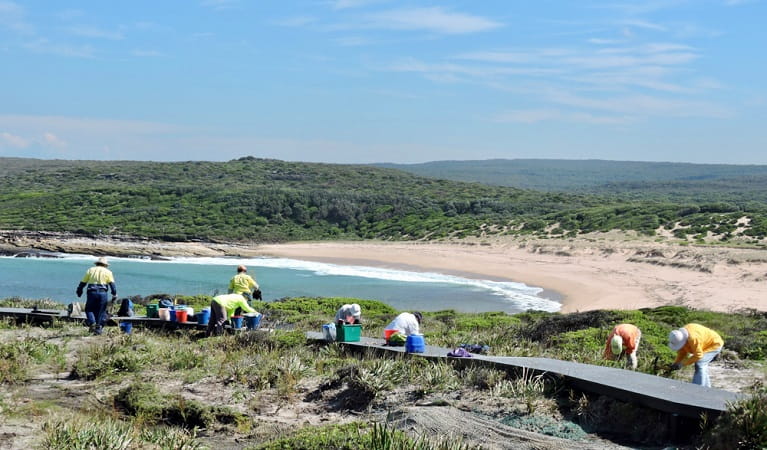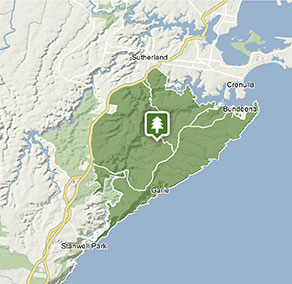Overview
Royal National Park was Australia’s first national park. Help protect its biodiversity well into the future. If you like gardening, volunteer to do bush regeneration in this popular park.
- Work
- Bush regeneration, weed and pest management
- When
Weekly throughout the year.
- Grade
- Medium. Most activities can be adapted to all levels of fitness, medium level of fitness required.
- Entry fees
- Park entry fees apply
The Royal bushies help protect Royal National Park’s diverse vegetation communities, from rainforest to coastal heath. When you volunteer with us, you’ll be actively conserving the biodiversity of this amazing park. All the plants and animals in the park benefit from our volunteers’ work creating a healthy bush environment.
Join in and meet like-minded people, while enjoying a fulfilling outdoor activity. You’ll learn a lot about Royal’s environments, while also becoming fitter and gaining a great sense of wellbeing. You’ll pick up new skills as you do this valuable weeding and bush regeneration work.
Wear sturdy shoes, clothes for all weather and conditions, a hat and sunscreen. Bring a raincoat, drinking water, snacks and lunch.
Gardening gloves and morning tea provided.
Find out more about volunteering with us
Saving Our Species program
Australia is home to more than 500,000 animal and plant species, many of which are found nowhere else in the world. Saving our Species is a statewide conservation program that addresses the growing number of Australian animals and Australian native plants facing extinction.

Park info
- in Royal National Park in the Sydney and surrounds and South Coast regions
Royal National Park is open 7am to 8.30pm but may have to close at times due to poor weather or fire danger.
-
Park entry fees:
$12 per vehicle per day. Payment options include Audley Visitor Centre, vehicle entry stations, pay machines and the Park’nPay app.
Vehicles over 8 seats: $4.40 per adult, $2.20 per child (per day). Teachers/educational supervisors: free (1 adult per 10 students).
Buy annual pass
What's nearby:
Things to do (124)
- Aboriginal culture (10)
- Birdwatching and wildlife encounters (39)
- Cafes and kiosks (2)
- Canoeing/paddling (14)
- Cultural heritage (5)
- Cycling (6)
- Educational activities (3)
- Environmental appreciation/study (1)
- Fishing (15)
- Historic heritage (18)
- Horse riding (1)
- Other experiences (3)
- Photography (2)
- Picnics and barbecues (40)
- Sailing, boating and cruises (4)
- Sightseeing (46)
- Snorkelling and scuba (2)
- Surfing (2)
- Swimming (13)
- Visitor centres (3)
- Walking (54)
- Waterfalls (9)
- Waterhole (1)
- Wildflowers (seasonal) (12)


